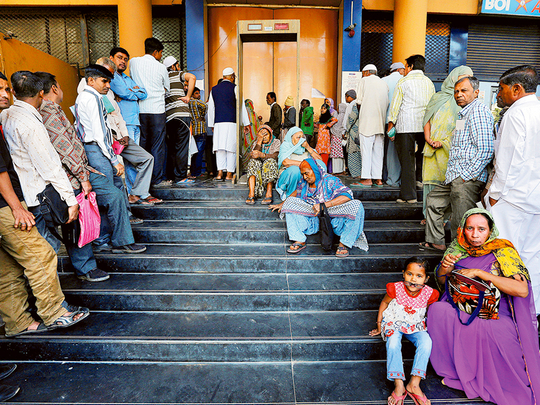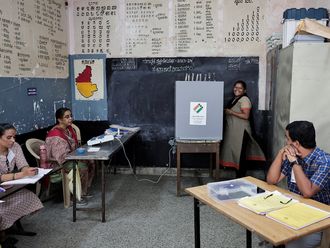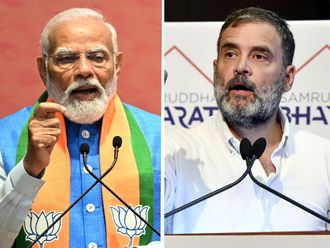
New Delhi: The Supreme Court on Friday asked the government to state the threshold limit of cash that each account holder can withdraw from banks across the country without being turned away.
The bench of Chief Justice T.S. Thakur, Justice A.M. Khanwilkar and D.Y. Chandrachud sought the information as the government said it did not have, for now, sufficient money to match the withdrawn currency notes and it was not going to print currency equivalent to what has been withdrawn.
“Not [the] whole [of demonetised currency] has to be replaced. It may not be needed,” Attorney-General Mukul Rohatgi said as the bench asked how much more currency it required.
As it became clear that cash crunch created by November 8 demonetisation decision would take longer to ease, the bench asked Rohatgi to reveal how much demonetised currency had come back, what the quantum was of new money and what gestation period is needed before the situation would ease.
On cash withdrawals, the court asked government to spell out the limit of cash an account holder can withdraw as it was told that though the government says that each account holder can withdraw up to Rs24,000 (Dh1,305) per week, the banks were instead giving them only Rs8,000 to Rs10,000.
Rohatgi told the court that total demonetised money that has come back was Rs1.2 trillion — about one trillion more than what was expected, and amounting to 80 per cent of the demonetised money.
As he said that there were Rs3 trillion new currency notes, the court observed that means there was deficit of Rs9 trillion.
Defending the government decision and the secrecy, he said that some amount of inconvenience was inevitable and that the government was “not just sitting back and not doing anything”, citing the notifications that the government was issuing on daily basis including the one on Thursday relating to exemption from transaction charge on digital payments.
The court also asked the government to state if it could relax curbs on accepting deposits by the district cooperative banks after imposing certain conditions.
Senior counsel Kapil Sibal, appearing for a petitioner, told the court that contrary to the government’s claim, there was no cash in the banks.
Former Finance Minister and senior counsel P. Chidambaram told the court that the Reserve Bank of India and the government of India printing presses can together print only Rs3 billion currency notes per month and replacing every demonetised note with a new note will take at least six months.
As Sibal asked why people “should be not allowed to legitimately withdraw my legitimate money”, Rohatgi said: “You can’t be allowed to withdraw.”
As Sibal asked why, he said it was because money is not there.
The court On Friday noted the seven to eight questions that it is likely to address having bearing on the demonetisation decision including the legality and constitutionality of the decision vis-a-vis various provisions of the RBI Act and the Constitution.
Fixing the next hearing on December 14, the court said that if it was agreed then matter could be referred to a large bench for adjudication.
As Rohatgi said that one of the questions that court should examine is about the limited scope of the judicial review of the matters of fiscal and economic policy, and took objection to both Chidambram and Sibal pitching for District Co-operative Bank, while none of the farmers whose grievances are being aired have not moved the court, Chief Justice Thakur asked why deposits in the district banks are not being allowed
“You tell us if something can be directed without affecting the larger issue or objectives” sought to be achieved through demonetisation, he asked Rohatgi.
As the AG told the court that the larger objective was to curb black money, stopping anti-terror funding and stopping fake notes, the court asked what steps could be taken during intervening period to ease the inconvenience being caused to the people while “looking at the larger objective you have in mind and without defeating them”.












